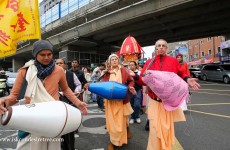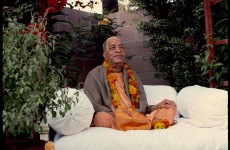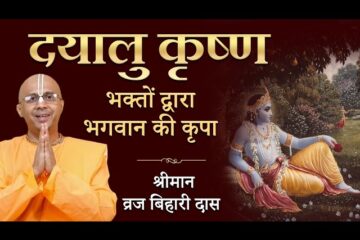Srila Prabhupada Envisions a “New” Vrindaban
By Madhava Smullen
“You have New York, New England, and so many ‘New’ duplicates of European countries in the USA, why not import New Vrindaban in your country?” –Srila Prabhupada, Letter, 3/17/68
In the spring of 2013, board members for ISKCON New Vrindaban and ECO-Vrindaban unanimously adopted a new community vision statement. It was called “Srila Prabhupada’s Vision for New Vrindaban.”
Its implementation as a renewed focus for the community might be new. But its roots go back long before Srila Prabhupada had even left India for the United States.
Back in 1956, while working alone in Delhi on his Back to Godhead magazine, Prabhupada had written a series of articles detailing his vision for a community where people would live a simple life based on the teachings of the Bhagavad-gita.
When he established ISKCON in New York in 1966, his seven purposes for the society included bringing members closer together “for the purpose of teaching a simpler and more natural way of life.”
As early as January 1968, he was issuing specific instructions about the community to his disciples: “The Ashram may be named as “ISKCON-Nagari or New Vrindaban.” And from May 1968 – the year when New Vrindaban was established — he issued a string of letters to his disciples describing exactly how he envisioned the community.
Through these, it’s clear that Prabhupada saw New Vrindaban as a sacred place known worldwide for five primary things: cow protection, self-sufficiency, holy pilgrimage, spiritual education, and above all, loving Krishna. And it’s these things that form the core of New Vrindaban’s vision statement today.
The first four are all inextricably connected to the last, loving Krishna. While teaching the importance of cow protection, for instance, Srila Prabhupada aligned New Vrindaban with the original transcendental village of Vrindavan, where Lord Krishna, His brother Balaram and Their friends would take Their cows to the pasturing grounds every morning.
“Krishna by His practical example taught us to give all protection to the cows and that should be the main business of New Vrindaban,” he wrote in a 1968 letter to Hayagriva.
Prabhupada taught the early residents of New Vrindaban to respect the cow and bull as their mother and father, as they could provide so many of the essentials of life. The bulls could till the ground, and be used for carting and transporting; while the cows could provide dung for fuel, and milk, butter, ghee and cheese for nourishment.
“The whole idea of New Vrindaban is that men who are living there should produce their own food, of which milk is the principal thing,” he wrote to Kirtanananda in July 1969.
Prabhupada envisioned New Vrindaban as a “self-governing village” that would set an example for the world and contain all the basic necessities residents needed: in one letter he explained how they could grow vegetables, fruit, wheat and other cereals, hand-weave cloth, and use an ox-powered mill to grind seeds into oil. Working to create this self-sufficiency, meanwhile, would keep devotees busy in the service of the Lord and ensure that they didn’t have to search for work outside.
This simple life wherein devotees had everything they needed, and weren’t distracted by trying to derive sense pleasure from modern amenities, was key to developing high thinking; or, in other words, Krishna consciousness, the true nature of the soul.
Adding further to the spiritual atmosphere of New Vrindaban were Prabhupada’s grand plans to physically recreate the original Vrindavan there, turning the community into a pilgrimage place. New Vrindaban is unique as the only farm community he envisioned in such a way.
“I have got ambition to construct there 7 temples as follows: 1. Radha Madan Mohan, 2. Radha Govinda, 3. Radha Gopinatha, 4. Radha Damodara, 5. Radha Raman, 6. Radha Gokulananda, 7. Radha Syamasundara,” he wrote to Hayagriva as early as 1968. He added in other letters, “The hilly portions may be named as Govardhana” and “If there are lakes, they can be renamed as Syamakunda and Radhakunda.”
Read more – http://www.newvrindaban.com/newvrindaban/node/433




































































